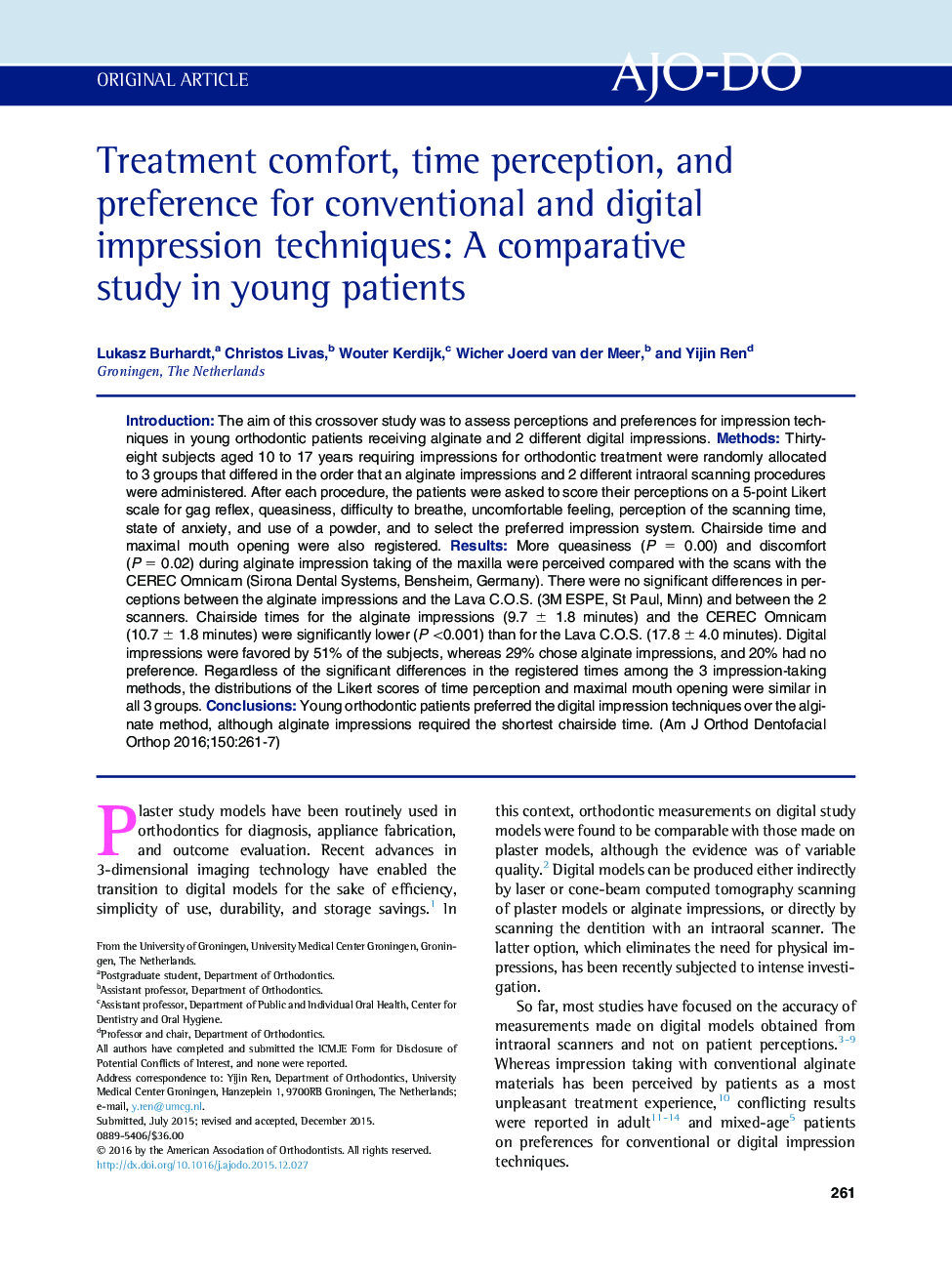| Article ID | Journal | Published Year | Pages | File Type |
|---|---|---|---|---|
| 3115411 | American Journal of Orthodontics and Dentofacial Orthopedics | 2016 | 7 Pages |
•We assessed perceptions and preferences for impression techniques in orthodontic patients.•We used alginate impressions and 2 intraoral scanners: Lava C.O.S. and CEREC Omnicam.•Patients reported more queasiness and discomfort with alginate impressions.•Patients preferred the CEREC Omnicam for impression taking.•Alginate impressions required the shortest chairside time, and Lava C.O.S. the longest.
IntroductionThe aim of this crossover study was to assess perceptions and preferences for impression techniques in young orthodontic patients receiving alginate and 2 different digital impressions.MethodsThirty-eight subjects aged 10 to 17 years requiring impressions for orthodontic treatment were randomly allocated to 3 groups that differed in the order that an alginate impressions and 2 different intraoral scanning procedures were administered. After each procedure, the patients were asked to score their perceptions on a 5-point Likert scale for gag reflex, queasiness, difficulty to breathe, uncomfortable feeling, perception of the scanning time, state of anxiety, and use of a powder, and to select the preferred impression system. Chairside time and maximal mouth opening were also registered.ResultsMore queasiness (P = 0.00) and discomfort (P = 0.02) during alginate impression taking of the maxilla were perceived compared with the scans with the CEREC Omnicam (Sirona Dental Systems, Bensheim, Germany). There were no significant differences in perceptions between the alginate impressions and the Lava C.O.S. (3M ESPE, St Paul, Minn) and between the 2 scanners. Chairside times for the alginate impressions (9.7 ± 1.8 minutes) and the CEREC Omnicam (10.7 ± 1.8 minutes) were significantly lower (P <0.001) than for the Lava C.O.S. (17.8 ± 4.0 minutes). Digital impressions were favored by 51% of the subjects, whereas 29% chose alginate impressions, and 20% had no preference. Regardless of the significant differences in the registered times among the 3 impression-taking methods, the distributions of the Likert scores of time perception and maximal mouth opening were similar in all 3 groups.ConclusionsYoung orthodontic patients preferred the digital impression techniques over the alginate method, although alginate impressions required the shortest chairside time.
